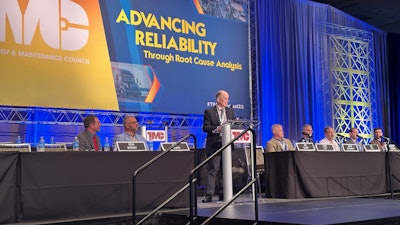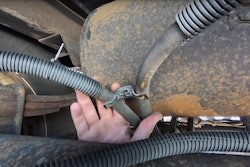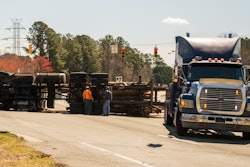
Jim Clark, now retired from the brake industry, was there when Recommended Practice (RP) 628 was written, and he was there in Orlando again this week when a panel discussed aftermarket brake linings during ATA's Technology & Maintenance Council (TMC) Annual Meeting.
"There's no federal regulation in the aftermarket," Clark says. "There's nothing there."
While OEM brake linings go through a battery of tests, including a dynamometer test and a vehicle stopping test, aftermarket products don't go through any federal testing or regulation. Some aftermarket companies will do dynamometer tests, Clark says, but few will do vehicle tests, citing expense.
Since 1995, Clark says 17 suppliers have submitted 117 linings for approval under RP628. Now, interest has waned, the panel says, and there are fewer and fewer products approved.
[RELATED: TMC panel says there's no 'learn as you go' approach with electric vehicles]
"It cost about a million bucks to those lining suppliers, but their participation validated this entire RP," Clark says.
Suppliers' linings had a larger-than-desired spread in test results.
"This is significant problem," Clark says. "Something is wrong here that we need to -- and I think we can -- address."
Kevin Moseman, regional maintenance director for Crete Carrier, said fleets tend to specify the friction materials they're comfortable with when they order trucks. If they change materials, they don't know if they have a match with wheel ends, axles and other parts.
"It leads to a lot of questions and it makes you uncomfortable," Moseman says.
Joe Kay, director of brake engineering at Cummins-Meritor, says when it comes to aftermarket brake linings, fleets tend to ask about safety, wear and cost, in that order.
"We want to make sure they've got a safe product and they're going to do what they expect the vehicle to do," Kay says.
Matthew Karich, engineering manager at Hendrickson, says there are other factors fleet managers want to look at too. Rotor cracking can be an issue, and managers also have to look carefully at how testing is run to make sure it accurately reflects how the product is used on the road.
Fleets in the audience were hesitant to speak up when asked how they evaluated aftermarket brake linings for their trucks, and audience questioning showed that not everyone was aware of RP628.
Clark recommended changes to the RP to make it easier for both manufacturers and fleets to use. He proposed eliminating the five-year deadline on linings, simplifying explanations, eliminate references to old stopping distance regulations, adding new categories for air disc brakes, develop a fade limit recommendation and possibly developing a new lining wear RP.
"Basically, there was a lot of interest when the RP first came out. It was a competitive thing between the lining suppliers," Clark says, adding that a lot of that interest came from fleet pressure on suppliers to meet RP628 approval. "We need the fleet pressure."











